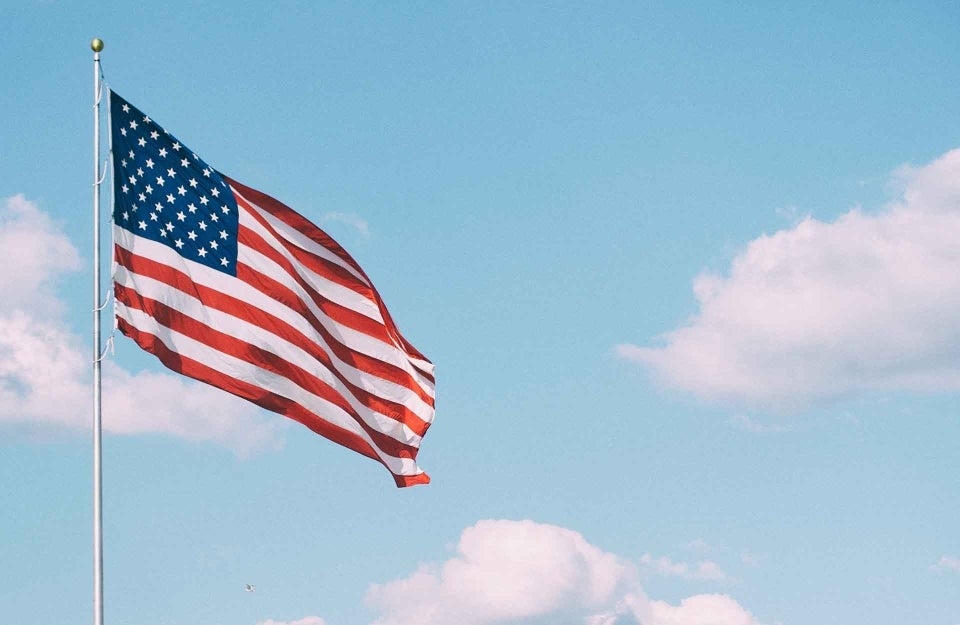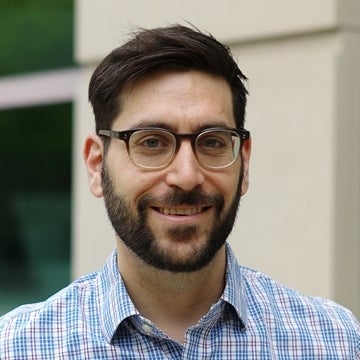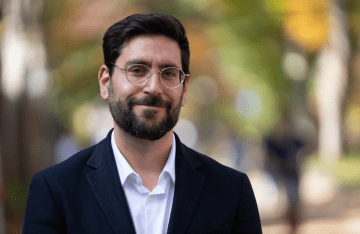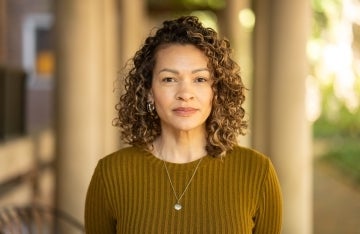How Ideologically Divided is the American Public?
The Polarization Research Lab, a new initiative from Prof. Yphtach Lelkes and colleagues at Dartmouth and Stanford, will work to answer that question.

Photo Credit: Aaron Burden / Unsplash
Social scientists in the United States have long debated whether the general public is ideologically polarized and whether such division is getting worse. “Basically, the question is whether people have become more extreme in their positions,” says Yphtach Lelkes, an Associate Professor at the Annenberg School for Communication. “Some people aren’t convinced that it has been happening.”

Lelkes started studying this subject as a doctoral student at Stanford University, where he met Sean Westwood, then a fellow grad student who is now an associate professor at Dartmouth College, and Shanto Iyengar, a professor and political scientist at Stanford and the Hoover Institution.
Two decades later, the trio has co-founded the Polarization Research Lab, a three-year, $3.9 million initiative to study polarization, social trust, and political violence in America. Penn Today spoke with Lelkes about the new project.
Why is research on polarization important right now? The United States has seemingly been divided for decades.
The country seems to be at a crossroads. There’s little accountability when politicians on your own side do something wrong. Instead, it’s all about your side winning and the other side losing. So, in that respect, polarization matters for democracy. We’ll be monitoring mass polarization as a temperature check on the nation. And the interventions that we hope to use — we plan to work with community practitioners to implement them — will aim to ameliorate the issue in some small way.
What do you mean when you say “mass polarization”?
Political scientists have long agreed that political elites like policymakers, party activists, donors, they’re polarized ideologically. But we often differentiate between the mass public and elites, so it’s still an open question as to whether the mass public has stayed fairly unpolarized. Ideologically, for many issues, that seems to be the case.
Can you describe some of the projects the Polarization Research Lab will take on?
At the highest level, we’re tracking mass polarization with weekly surveys of 1,000 people for three years, to start with, and we will be content-analyzing tons of elite rhetoric. We’re planning to look at the relationship between the way the elites speak, the vitriolic rhetoric they use, and trends in mass polarization. That’s the big monitor.
We’re also doing survey experiments aimed at reducing polarization. The lab will be running those, but we’ll also open it up to other researchers and potentially to other practitioners who want to test the interventions.
Finally, one of the big goals is community involvement. There are a bunch of organizations that work in depolarization in communities; we want to open a dialogue with them. They can suggest interventions that we will implement and maybe even put into practice in their communities.
What has previous research from you and your colleagues revealed about polarization trends in the U.S.?
What we noticed 15 years ago or so now is that even though people don’t necessarily disagree with one another substantively, they dislike each other a lot more than they used to. One big question from our first paper on this was, “Would you be unhappy if your kid married someone from the other party?” In 1960, 5% say they cared. Today, it’s like 30%. That was the first paper on that subject, which Shanto and I published in 2012. Sean and Shanto published another paper shortly thereafter, which also did the theoretical work.
You also recently published findings about polarization in cable news. Where does that fit?
That paper was a measurement paper. We used TV news archives to figure out the ideology of people who appeared on cable news. You see that they trended together over time, so Fox News is always to the right of MSNBC and CNN, which is not surprising. And that happened until 2016, when the channels kind of polarized. They were already far apart, but at least until then, the trends correlated. In 2016 they split, with Fox going in one direction and MSNBC and CNN going in the other.
My colleagues and I believe that people are becoming polarized based on the information they’re consuming. That’s why we distinguish between the elites and mass public. If cable news is polarizing, then it’s exacerbating the problem. This is one reason we’re doing the content analysis; we’re hoping to scale up that paper and keep it going in real time, so we can track what policymakers are saying.
What are the implications of this work?
There’s a lot of concern about democratic deterioration. People are increasingly not supporting democratic norms if the norm is bad for their side. Republicans are pro gerrymandering, Democrats are against it, for example. We want to track support for democratic norms, social trust, social cohesion in general. Our survey will show us how events — say, if the President unveils a new policy or if there’s some sort of political scandal — affect public opinion. We’d like to keep track of it, to help solve some of these problems.



